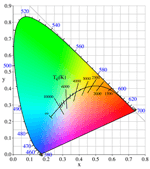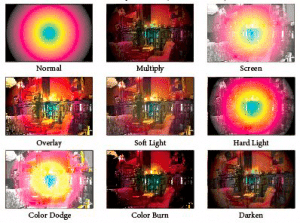The Latest in PDF 2.0 Test
PDF 2.0 is here! What do you need to change for PDF 2.0 test? What PDF 2.0 test suites are available?
PDF is ubiquitous on desktop and mobile platforms alike. The format, created by Adobe Systems, is the standard of choice for exchanging rich documents securely and accurately. The standard has evolved from a document-centric format to one that can represent rich content, including multimedia, 3D, and interactive content. The ISO 3200-1 standard (AKA PDF 1.7) was introduced in 2008. As PDF usage evolves, it drove the next iteration of the PDF standard. ISO 32000-2 (PDF 2.0) was released in July 2017.
Are you wondering what this new release means to you as an implementers of the PDF standard? What impacts does the new standard have for the different classes of PDF consumers and producers in the industry? Does the new spec cause changes to the printers that consume PDF files? What changes can PDF application vendors expect with the new ISO 32000-2 standard? How does this change PDF testing?
In an upcoming series of posts, we will explore the changes introduced in the ISO 32000-2 (PDF 2.0) standard and changes to our PDF 2.0 test suites.
Here’s a preview of significant updates to the PDF 2.0 standard.
New Features
- Black Point Compensation, which can now be used during CIE color processing to factor in black point to compensate for shadow area truncation
 Rich Media Annotation, which effectively replaces the support for Movie and Sound annotation types and provides a general annotation framework to present multimedia content, such as video, audio, animation, and others
Rich Media Annotation, which effectively replaces the support for Movie and Sound annotation types and provides a general annotation framework to present multimedia content, such as video, audio, animation, and others- Unencrypted wrapper document, which provides for custom security handlers to be included in a PDF document
- Support for CMS Advanced Electronic Signatures (CAdES) to support more advanced digital signatures for PDF documents
- Document Parts to support multiple PDF sub-documents within a single PDF file
- Associated Files to associate the content of different formats to objects of a PDF file at the document, page, and object levels
- Support for UTF-8 format in the PDF document
- …and more
New Capabilities
- 256-bit AES encryption replaces the older encryption standard (now considered unsafe) supported in PDF 1.7
- Length key for inline image data optimizes performance for the PDF Processor by simply skipping the inline images using this key if it chooses to
 Halftone Origin (HTO) specifies the origin of the halftone in the current coordinate system
Halftone Origin (HTO) specifies the origin of the halftone in the current coordinate system- OutputIntents for color rendering added at the Page level to provide further workflow flexibility (PDF 1.7 standard supported OutputIntent only at the document level)
- Additional keys introduced for Polygon and Polyline annotation types
- …and more
Clarifications
These changes resolve ambiguous statements in the PDF 1.7 standard:
- Rendering section that explains the rendering process for colors and scan conversion to raster output device has been rewritten to provide clarity
 Transparency chapter has been updated to provide clarifications around transparency blending and rendering
Transparency chapter has been updated to provide clarifications around transparency blending and rendering- Painting a path when the current path is undefined generates an error
- Image interpolation description was rewritten to clarify the implementation behavior
- Clarification of rendering behavior when a degenerate glyph sub-path is stroked (versus filled) under certain conditions
- …and others
Deprecated Features
These recommendations discourage use of obsoleted features. For backward compatibility, deprecated features are not strict exclusions:
- PostScript XObject has been discouraged, even with the original PDF 1.7 standard. With PDF 2.0, this section has been completely removed.
- OS-specific file specifications such as the use of “DOS,” “Mac,” and “Unix”
- Open Prepress Interface (OPI) has been removed from the specification
- Use of weaker signature schemes, such as adbe.x509.rsa_sha1 and adbe.pkcs7.sha1
- Names key for XObjects and Fonts have been deprecated
- …and more
Updated PDF 2.0 Test Suites
QualityLogic develops test suites that are used by printing and application vendors to perform deep technical testing of their PDF implementations. We’ve updated these PDF test suites for the PDF 2.0 test changes:
- New! PDF 2.0 Functional Test Suite (FTS)
- PDF Application Test Suite (ATS) – coming soon!
- New! PDF InteropAnalyzer
If you are interested in learning more about these PDF 2.0 test suites, please contact us.